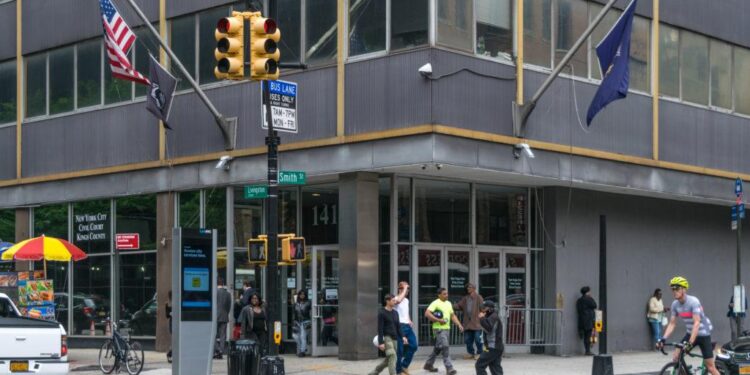A recent legislative proposal backed by the Trump administration has raised serious concerns about the future of healthcare coverage for millions of New Yorkers. According to reports from The New York Times, the bill could result in approximately 1.5 million residents of the state losing their health insurance. Critics argue that the changes would disproportionately affect vulnerable populations and strain New York’s healthcare system. This article examines the key provisions of the bill, its potential impact on coverage rates, and the responses from state officials and advocacy groups.
Potential Impact on New York Healthcare Access and Coverage
New York faces a significant upheaval in healthcare access if the proposed legislation advances. With approximately 1.5 million residents at risk of losing coverage, the implications stretch beyond individual households to strain public health infrastructure and social services. This bill threatens to roll back Medicaid eligibility expansions that have been critical in reducing the uninsured rate across the state, especially amongst low-income communities and minority populations.
Key consequences include:
- Reduced access to essential preventive care and chronic disease management.
- Increased emergency room visits due to untreated health issues, driving up overall healthcare costs.
- Strained county health departments and hospitals, many of which already operate near capacity.
- Disparities in coverage likely to widen, disproportionately affecting vulnerable groups such as children, seniors, and immigrants.
| Healthcare Metric | Current State | Projected Post-Bill |
|---|---|---|
| Uninsured Population | ~4.8% | ~12% |
| Medicaid Enrollment | 6.5 million | Approximately 1.5 million fewer |
| Emergency Room Visits | Approximately 3 million annually | Expected to increase by 15% |
| State Healthcare Spending | $80 billion | Potentially reduced by $5 billion |
Detailed Analysis of the Proposed Bill’s Effects on Vulnerable Populations
The proposed bill would disproportionately affect the most vulnerable groups within New York State, especially low-income families, seniors, and individuals with pre-existing conditions. By reducing Medicaid funding and altering eligibility requirements, over 1.5 million residents risk losing critical coverage, leading to widening health disparities. Community health centers, which serve as a lifeline for many uninsured patients, are expected to face budget cuts that could force them to scale back essential services in underserved neighborhoods.
Key populations at risk include:
- Low-income families: Increased premiums and reduced subsidies would make healthcare unaffordable for many, pushing them further into poverty.
- Seniors: Changes to Medicare and Medicaid coordination could lead to higher out-of-pocket costs.
- People with chronic illnesses: Loss of coverage would mean decreased access to medication and regular care, exacerbating health outcomes.
| Group | Estimated Coverage Loss | Primary Impact |
|---|---|---|
| Low-Income Families | 800,000 | Unaffordable premiums |
| Seniors | 400,000 | Higher out-of-pocket expenses |
| Chronic Illness Patients | 300,000 | Reduced medication access |
Strategies for Advocates and Policymakers to Protect Health Insurance Rights
Advocates and policymakers must adopt a multifaceted approach to safeguard health insurance rights amid legislative threats. Building robust coalitions that include community organizations, healthcare providers, and legal experts can amplify collective voice and influence. Targeted grassroots campaigns, emphasizing personal stories and local impact, are essential to humanize the risks and rally public support. In parallel, continuous engagement with legislators through lobbying, testimony, and data-driven presentations can clarify the unintended consequences of the proposed changes and push for amendments or blocks.
Additionally, transparency and public education are crucial tools in this effort. Developing clear, accessible informational resources-such as fact sheets and interactive online tools-can empower citizens to understand their coverage risks and mobilize effectively. Policymakers should prioritize legislation that strengthens consumer protections and expands access rather than retrenchment. Below is a concise breakdown of strategic priorities designed to confront the potential loss of coverage in New York:
| Strategy | Key Actions | Expected Impact |
|---|---|---|
| Coalition Building | Partner across sectors | Unified advocacy front |
| Legislative Engagement | Lobby & present data | Policy amendments |
| Public Education | Inform citizens clearly | Mobilized voter base |
| Consumer Protection Laws | Enhance coverage safeguards | Reduced insurance loss |
Final Thoughts
As the debate over the proposed legislation continues, the potential loss of health coverage for 1.5 million New Yorkers underscores the high stakes involved in shaping the future of healthcare. Policymakers, advocates, and affected individuals alike are closely watching the developments, aware that decisions made in Washington will have profound and immediate consequences for millions across the state. The coming weeks will be critical in determining whether these New Yorkers can maintain access to essential health services or face new barriers under the proposed Trump bill.










